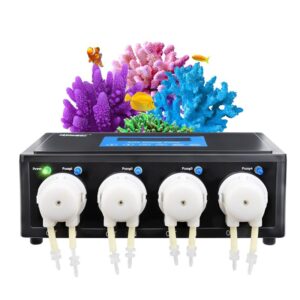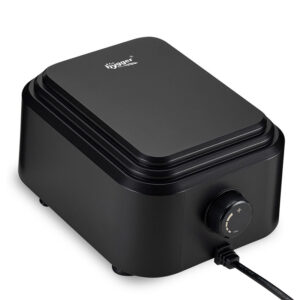When people think about keeping fish, buying an aquarium is often the first step they take. However, before buying an aquarium, make sure that the aquarium you choose is both what you need and what your fish needs.
Content Table
There are many sizes and shapes of aquariums. Although they are used to holding fish and water, there is always one that is better than the rest. We want our aquarium not only to look good from the inside but also from the outside. However, although style is an important factor to consider, the demand for fish is even more important.
When choosing an aquarium, first choose the fish you want to keep in the aquarium, and then find the most suitable aquarium that meets its needs.
Shape
An aquarium must have a large surface area relative to its volume so that gas can pass freely on the surface of the water. Fish need to swim horizontally. To achieve this, the length of the aquarium needs to be longer than the body length of the fish being raised, and wide enough for them to turn around so that they can swim freely in the water.
The most practical aquarium is the right angle aquarium, because it meets the space requirements of the fish during swimming, and has a large water surface area. The other is the curved aquarium, which is almost as suitable as a right-angled aquarium. After decoration, the curved front wall of the aquarium makes these aquariums look pretty and are very popular among fish hobbyists.
The arc-shaped aquarium is thick from front to back, but not very long. This type of aquarium is mainly suitable for some special landscaping, such as rocks, corals, or water plants being stacked in the back corners to form a beautiful landscape. However, this aquarium has a much smaller surface area and volume than right-angled aquariums and arc-shaped aquariums.
The square aquarium is very simple and does not require a large area, so it is very popular. The disadvantage is that the surface area of the water and the distance the fish can swim freely are relatively limited.

Bowl-shaped aquariums and cylindrical aquariums are most unsuitable for fish keeping due to their small water surface area and lack of sufficient swimming space for fish.
Generally speaking, tall fish need a deeper aquarium. Fish such as discus and angelfish, need an aquarium that is at least four times the depth of their height so that they can swim in the water freely. Slender fish, like mackerel and guppy, live in shallow waters in nature, and shallow-water aquariums are the most suitable for them. Flat and wide fish, like red stingrays, require a very wide aquarium from front to back so that they can easily flip in the aquarium and have enough space to search for food at the bottom of the water.
Size
When it comes to choosing an aquarium, of course, the bigger, the better, because the more water, the more stable the water quality and temperature. Even a 1.2-meter-long aquarium, placed in your living room, may look large, but it is still very small compared to the rivers and lakes where fish naturally inhabit.
To give you a basic principle, a fish must swim freely in the aquarium. The length of the aquarium is at least 6 times its body length and 2 times its body width. This means that a 15 cm long Gouramia needs an aquarium 0.9 meters long and 0.3 meters wide; a 30 cm long Oscar needs an aquarium 1.8 meters long and 0.6 meters wide so that the fish can swim happily in the aquarium.
Fish will grow up, so when choosing an aquarium, you need to make sure that the size of the aquarium can meet the size requirements of the different development stages of the fish you raise. If you don’t want to change the size of the aquarium, don’t buy the krill of those large fish. Large fish are only liked by a few enthusiasts, zoos and aquariums will not adopt them for you.
Once you have found a suitable aquarium for the fish species you have selected, you need to do further investigation to see if the fish live alone or in groups, and how active they are. If a 5 cm tiger barb is mono-cultured, it will not be very active and does not require a large aquarium; but because it is a relatively active fish that loves to live in groups, you cannot just keep one in an aquarium, so you must put at least 10 or more barbs in and choose a larger aquarium.
Nano Aquarium
Nano aquarium is a kind of small aquarium, generally, the total volume is less than 100 liters. As long as there is an aquarium, there is a small aquarium, but in modern times, this small aquarium is named nano aquarium.
Nano aquariums are usually compact, cubic, and small, and can be placed on a table (table or desk). It usually comes with a built-in reflecting shade, lamp, and filter.
Nano aquariums can be used to keep cold water fish, tropical fish, or marine fish, but due to their small size, the pet fish and decorations must be selected accordingly. The idea is to create a full-featured, small-scale version of a large aquarium, which also contains aquatic plants or corals, and can also raise all kinds of small fish in freshwater or seawater.
Compared with large aquariums, nano aquariums have many advantages. They are cheap, have low maintenance costs, low power consumption, and do not take up much space. This is why they are so popular. The disadvantage is that the water quality is not as stable as that of large aquariums, which means that the owner needs to be extra vigilant and there are fewer fish that can be raised. I always recommend choosing the largest possible aquarium. If you don’t have enough space to place the aquarium in your home, then the nano aquarium is a wise choice.


Leave a comment